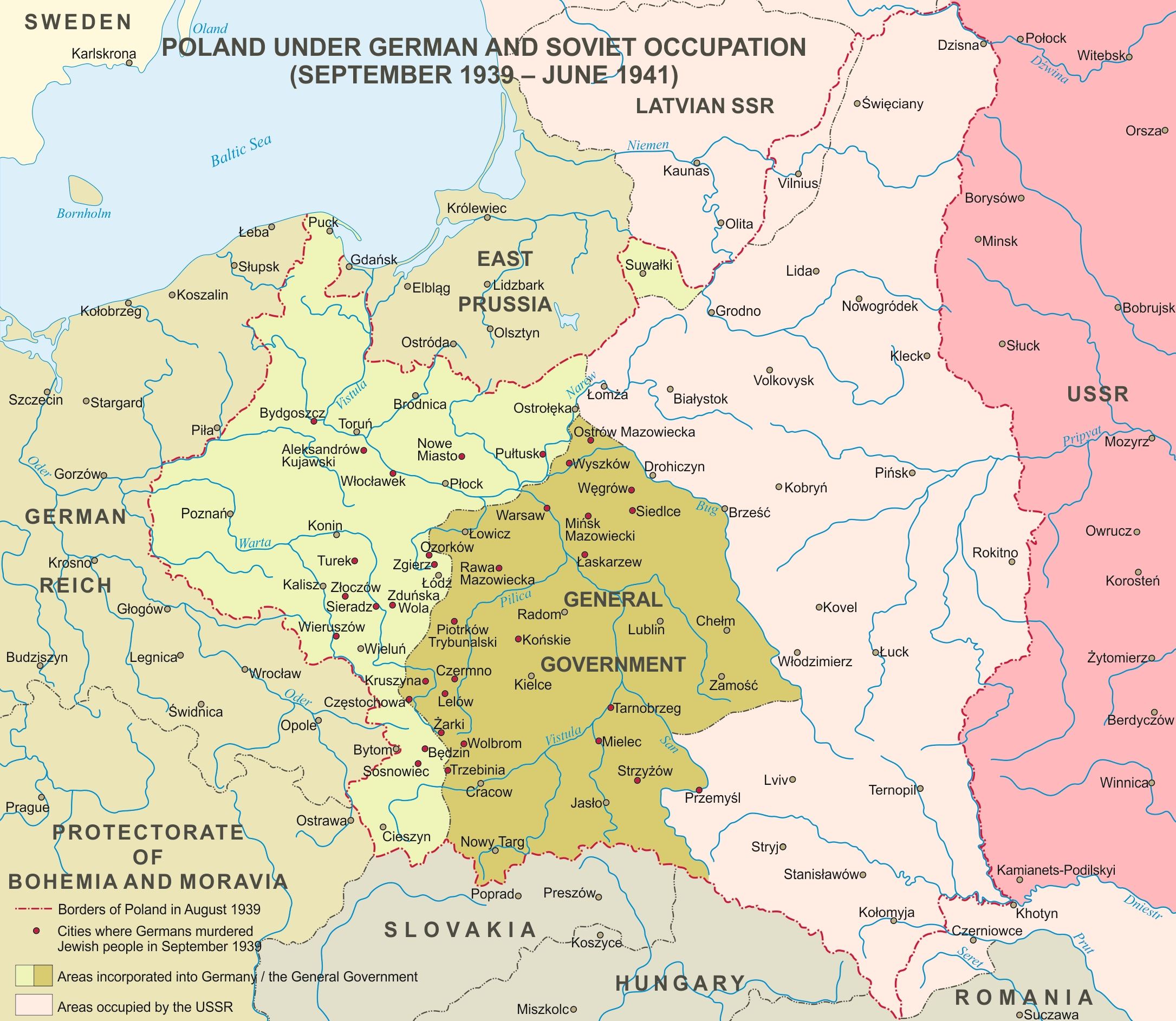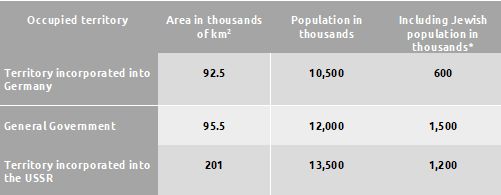Even before the campaign in Poland was over, Germany and the USSR started dividing between themselves the newly conquered territories. On 28 September 1939, a ‘treaty of borders and friendship’ was signed, regulating the new German-Soviet border to run along the line of the Pisa-Narew-Bug-San rivers. As a result, Polish territories occupied by German and Soviet armies were divided into separate parts: territories incorporated into the Reich (Greater Poland, Pomerania, Silesia), the so-called General Government (Generalgouvernement, GG) with a capital in Cracow, where presided the German Governor General Hans Frank, and the eastern lands of Poland, annexed by the USSR. Here it is worth mentioning that, apart from matters concerning interstate boundaries, the German-Soviet ‘treaty of borders and friendship’ also foresaw cooperation in combatting the Polish resistance movement, which considerably facilitated the occupiers’ policies of persecution and repression.
German policies in occupied Polish territories varied. Polish territories incorporated into the Reich were treated as part of the German state, where German law applied. Here Polish national identity was ruthlessly crushed. The territories were supposed to be Germanised through the settlement of ethnic Germans from the Baltic countries, Volhynia and Bessarabia. The General Government, in turn, became a reserve of slave labour to be exploited by the Third Reich war industry.
In the period between September 1939 and June 1941, Nazi policy towards Jews in occupied Polish territories involved depriving them of basic rights and subjecting them to numerous restrictions, terror and repressions, persistent humiliation, isolation from the rest of society and being forced to do slave labour. For these purposes, the Jews were concentrated in ghettos and, from 1940, they were also sent to labour camps.
And even though the scheme of mass extermination had not yet been fully determined, already then thousands of Jews fell victim to terror, inhumane living conditions, slave labour, hunger and disease. For this reason, Nazi policy towards the Jews at this stage is called ‘indirect extermination’.


